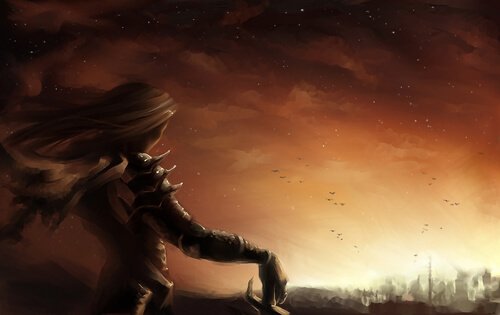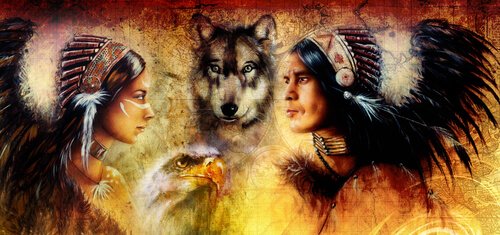The Heroine's Journey

The heroine’s journey, like any archetypical hero’s journey, is a process of individuation. The traveler sets off on an adventure out of her ordinary world to face enemies and dragons. The hero overcomes obstacles with the help of a mentor (real or supernatural) who prepares her to face her challenges.
Along the way, she will have to make important decisions, some of them will have life or death consequences. There are also rewards in store for the hero, and a journey home that isn’t without its own difficulties.
She will find sirens along the way who will do anything they can do get the hero to abandon her quest. It’s a journey of the human psyche with some real and symbolic stages that vary depending on the person. Separation from the mother and acceptance by the father are two examples of many potential stages of the journey.
This archetypical journey involves figuring out who you really are and transforming the vision that you have about the world and yourself. It’s a search for a more transcendent meaning of life and a desire to express your true nature.
The mythologist and historian Joseph Campbell popularized the idea of the hero’s journey in the mid-19th-century with his book The Hero of a Thousand Faces.
The heroine’s journey is different
The hero’s journey, also known as a monomyth, has patterns that are valid for men as well as women. It’s a difficult path and women have to deal with an extra degree of difficulty. Why? Because we are making this journey in a “man’s world.”
Women go in search of their identity in an environment that treats femininity like something dependent, inferior, and an object of temptation.
These are some of the dragons that women have to face if they want to take this journey. In so many cases, heroines unconsciously use the masculine journey as a reference point for facing their own.

There is an initial rupture with the outside world through with the woman seeks her identity through professional success, power, and perfection. These values are fundamentally masculine, archetypically linked to the journey to the world of the sun, intellect, and power. In other words, the journey of the father.
This stage is significantly destructive for women and tends to be the precursor to a dramatic event in their lives like illness, loss, or a breakup. It’s a break for the impenetrable feminine psyche.
In this critical phase, the heroine feels lost and like she can’t control anything. She can’t find references to guide her, which causes confusion and sometimes great suffering.
Integrating the feminine
An encounter with her own feminine nature is the next step in the heroine’s journey. She also has to improve her relationship with other women. That happens when she meets wise and admirable women along the way. This gives the heroine new points of reference and new ideas that were previously closed.
In this stage, the rational mind no longer dominates. The circumstances and events seem to defy logic, the subjective world dominates. The traveler considers the importance of nature’s cycles and her own cycles. She intuitively understands and feels connected to the elements all around her.
Happiness and love are two of the things that she starts to see very differently. It’s a tremendously creative time. The heroine will encounter her mother or other women who symbolize her mother. If healthy healing of her relationship with her mother isn’t possible, she will have a harmonious encounter with her own maternal nature.
Integrating the masculine on the heroine’s journey
The goal of this stage of the journey is to come to terms with men and male energy. The heroine has to integrate everything she’s learned during the painful first part of the journey. Sometimes this happens through a change in a difficult relationship with her father or someone who symbolizes her father.
This leads to a stage of emotional relationships in which our heroine doesn’t give up her own freedom. If male figures are in her life, it’s because she deeply admires them. We are talking about a harmonious integration of both male and female elements that tends to give way to artistic production.

The return
For women, coming back from this journey is also an opportunity for reconciliation with their bodies and their sexuality. There is a recognition of how sacred the feminine side is in every human being.
The heroine brings back all this wisdom with her from her odyssey. She has left that judging inner voice behind and replaced it with values like success and romantic love. Finally, her vision of the world is transformed, and she trusts her instinct.
In conclusion, the return journey can be dark and full of things that challenge the deepest corners of the mind. It’s also a journey that you don’t always want to take and you can never fully prepare for. Have you felt the call? Are you ready to go on your own journey?
This text is provided for informational purposes only and does not replace consultation with a professional. If in doubt, consult your specialist.








